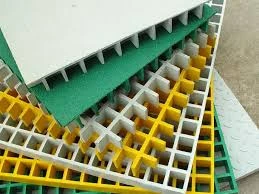loading...
- No. 9, Xingyuan South Street, Dongwaihuan Road, Zaoqiang County, Hengshui, Hebei, China
- admin@zjcomposites.com
- +86 15097380338
- Welcome to visit our website!
Exploring the Benefits and Uses of Sectional Tanks for Efficient Storage Solutions
Understanding Sectional Tanks A Comprehensive Guide
In modern construction and engineering, the efficiency and effectiveness of water storage systems are paramount. One such solution that has gained considerable attention is the sectional tank. Unlike traditional water tanks, sectional tanks are constructed from pre-fabricated panels that are assembled on-site, making them an increasingly popular choice for both residential and commercial applications. This article will delve into the various aspects of sectional tanks, highlighting their advantages, applications, and the factors to consider when choosing the right tank for your needs.
What are Sectional Tanks?
Sectional tanks, often made from materials like steel or fiberglass, are composed of several sections or panels that fit together to form a complete tank. This modular design allows for flexibility in size and shape, accommodating various spaces and storage requirements. These tanks can be used for different purposes, including potable water storage, rainwater harvesting, industrial applications, and fire protection systems.
Advantages of Sectional Tanks
1. Customizability One of the primary benefits of sectional tanks is their customizability. They can be designed to meet specific dimensional requirements, allowing for efficient use of available space. Whether you need a tall, narrow tank or a short, wide one, sectional tanks can be tailored to fit your needs.
2. Ease of Transportation and Installation The modular nature of sectional tanks makes them easier to transport. The panels can be shipped separately and assembled on-site, reducing logistical challenges. This feature also makes installation quicker and less labor-intensive than traditional tanks.
3. Cost-Effectiveness Sectional tanks can be more cost-effective compared to welded or concrete tanks, especially for larger sizes. The materials required for sectional tanks are often less expensive, and the reduced labor costs associated with installation further contribute to overall savings.
4. Maintenance and Repair Should any part of the tank become damaged, individual panels can be replaced without having to dismantle the entire system. This ease of maintenance ensures that the tank remains functional over its lifespan.
5. Durability Constructed from robust materials, sectional tanks are built to withstand environmental stresses. They are resistant to corrosion, making them suitable for various water types and ensuring a long service life.
Applications of Sectional Tanks
sectional tanks

Sectional tanks find applications across a broad spectrum of industries. In residential construction, they are often used for rainwater harvesting, providing an eco-friendly solution for water collection. In commercial settings, sectional tanks can serve as water storage for irrigation systems or as part of fire protection systems. Additionally, industries utilize sectional tanks for chemical storage, waste management, and food processing, highlighting their versatility.
Choosing the Right Sectional Tank
When considering a sectional tank, there are several factors to take into account
1. Capacity Needs Assess your water storage requirements to determine the size of the tank you need. Sectional tanks can be adjusted in size to meet specific demands, making it essential to plan accordingly.
2. Material Selection The material of the tank will impact its durability and suitability for your application. While steel and fiberglass are common choices, considerations regarding corrosion resistance and structural integrity are critical.
3. Local Regulations It is crucial to familiarize yourself with local building codes and regulations governing water storage systems. Compliance ensures safety and legality in water storage.
4. Installation Logistics Consider access to the installation site, as larger tanks may require special equipment for assembly. Additionally, planning for maintenance access is important for the long-term usability of the tank.
5. Supplier Reputation Finally, choose a reputable supplier who can provide quality materials and support throughout the installation process. Customer reviews and industry certifications can guide you in making an informed decision.
Conclusion
Sectional tanks represent a modern and efficient solution for various water storage needs. Their customizability, cost-effectiveness, and ease of maintenance make them an attractive option for both residential and commercial applications. By carefully considering your requirements and the factors outlined above, you can select the ideal sectional tank that suits your needs, ensuring a reliable water storage system for years to come.
-
GRP Structures: The Future of Lightweight, High-Performance EngineeringNewsJun.20,2025
-
FRP Water Tank: High-Performance Storage for Corrosive and Clean Water SystemsNewsJun.20,2025
-
FRP Square Tube: The New Industry Standard for Chemical and Structural ApplicationsNewsJun.20,2025
-
FRP Pultruded Profiles: The Ultimate Choice for Lightweight Structural StrengthNewsJun.20,2025
-
FRP Handrails: The Safer, Smarter, and Stronger Choice for Modern InfrastructureNewsJun.20,2025
-
FRP Grating: The Smart Solution for Durable, Lightweight Industrial FlooringNewsJun.20,2025
-
Why Choose a Galvanized Water Tank for Your Storage NeedsNewsMay.21,2025
